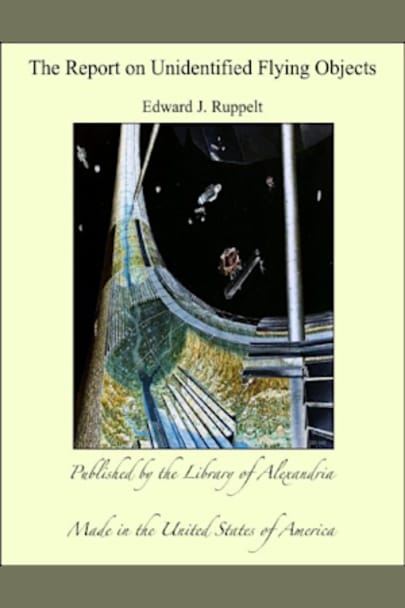This is a book about unidentified flying objectsUFO’s”flying saucers.” It is actually more than a book; it is a report because it is the first time that anyone, either military or civilian, has brought together in one document all the facts about this fascinating subject. With the exception of the style, this report is written exactly the way I would have written it had I been officially asked to … to do so while I was chief of the Air Force’s project for investigating UFO reportsProject Blue Book. In many instances I have left out the names of the people who reported seeing UFO’s, or the names of certain people who were associated with the project, just as I would have done in an official report. For the same reason I have changed the locale in which some of the UFO sightings occurred. This is especially true in chapter fifteen, the story of how some of our atomic scientists detected radiation whenever UFO’s were reported near their “UFO-detection stations.” This policy of not identifying the “source,” to borrow a term from military intelligence, is insisted on by the Air Force so that the people who have co-operated with them will not get any unwanted publicity. Names are considered to be “classified information.”
more



This is a most unusual book.
Originally published in 1956 by the former director of Project Bluebook, the U.S. Air Force’s controversial investigation into Unidentified Flying Objects (UFO), the first seventeen chapters make the case that the Air Force too easily dismissed UFO reports and that many sightings could not be so easily debunked. The last three chapters, written four years later for a second printing, then dismisses the UFO phenomena as little more than popular myth.
The author, Edward J. Ruppelt, was a decorated WWII bombardier who was recalled to active duty during the Korean War. Attached to Air Force technical intelligence, he was assigned to Project Grudge, a predecessor to Bluebook. He took over the “You-Fo” desk when the Air Force was forced to pay better attention to the phenomena. During his time as Bluebook director, Ruppelt said he was frustrated that the Air Force publicly dismissed most UFO sightings as weather balloons, misidentified aircraft or clouds, or hoaxes while behind closed doors there was serious concern that the UFOs might actually be interplanetary spacecraft.
As much as 20 percent of UFO sightings remained “unknown” during Ruppelt’s time on Bluebook, and some had incredible evidence. More than once military jets engaged in high speed dogfights with UFOs, twisting and turning through the sky (weather balloons can’t maneuver). Ruppelt led many well-known scientists in research projects into the phenomena. One study looking at UFO maneuvers determined the craft were intelligently controlled – by whom they couldn’t determine – but no high-ranking Air Force officer would sign his name to the report, so it never saw daylight. Ruppelt also criticized the news media for being too eager to accept Air Force explanations for sightings.
Ruppelt never made a claim as to what the “unknown” sightings were or if they were manned by aliens from another planet. He concluded the first edition by saying “only time will tell” what the answer is.
Four years later, however, he added three more chapters to the book that appeared to take a less open-minded view. Whereas in the earlier chapters, Ruppelt championed “trained observers” – military and commercial pilots, radar operators, and scientists – who came forward to report UFO sightings, in the later chapters he dismissed the idea that such people should be called trained observers. Ruppelt essentially concluded that all UFO sightings could be identified, using as an example a sighting of his own—which he never mentioned in the first edition of the book. In conclusion, Ruppelt dismisses UFOs as a “Space Age Myth.”
What makes this book even more unusual is that the second edition, published in 1960, retained the 1956 publication date and copyright, as if trying to make readers think the last three chapters were always part of the book (even though Ruppelt admits in Chapter 18 that four years have passed.) Ufologists suggest Ruppelt was forced by the Air Force to add the last three chapters, but we will never know because shortly after the 1960 publication Ruppelt was dead of a heart attack at age 37.
You couldn’t find a better plot twist than that on an episode of The X-files.